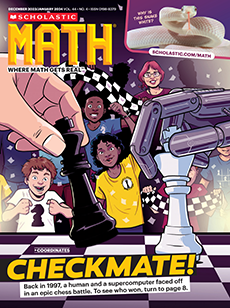Launch the slideshow “Studying Tears” and zoom in on the image of the first slide so that students can’t see the text. Ask students to describe the photograph and have them guess what it shows, keeping the description hidden. Then tell students the photo is a close-up image of caiman tears. Click through the slideshow to view the tears of other animals. Select volunteers to share their observations for each photograph.
CCSS: 6.SP.B.5.B, MP1, MP3, MP5
TEKS: 6.12A
